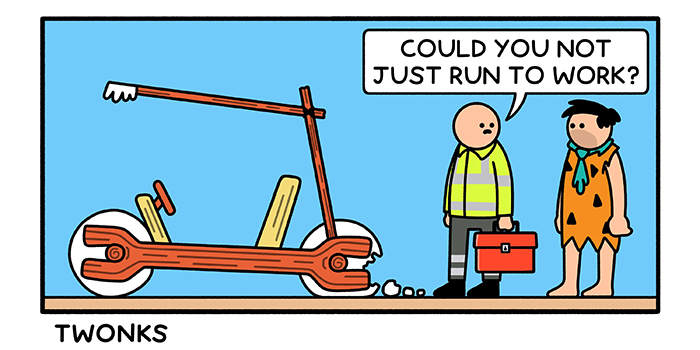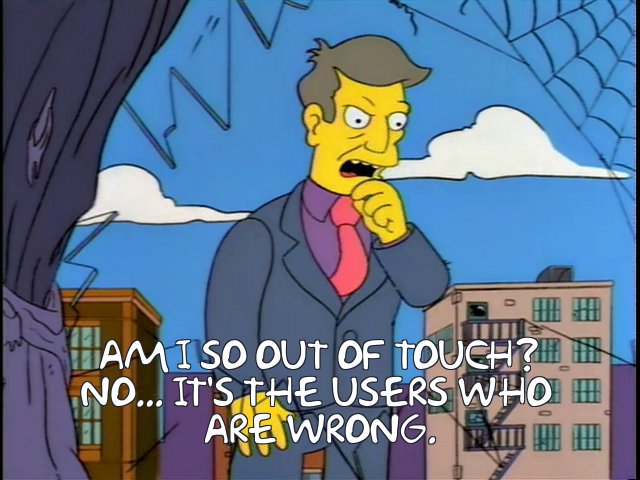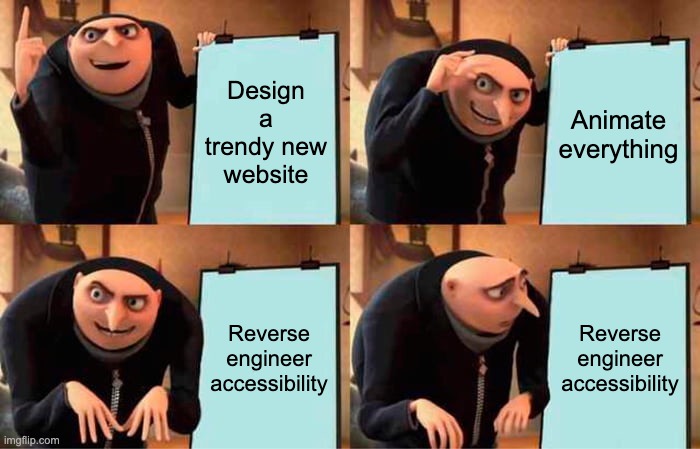Website Redesign: Cosmetic Fixes vs. Meaningful Improvements
When a website starts to feel outdated or underperforms, the obvious solution is a redesign. Out with the old, in with the new. Something sleeker, that pops, and that’s as good as, or better than, our competitors! Sure, the look and feel might be contributing to the problem, but is it really the root cause?
If your website isn’t performing well, it’s highly unlikely that the problem lies purely in visual design. Users aren’t failing to convert just because they’re deeply offended by how it looks. After all, there are plenty of ugly websites that perform very well.
Sure, the look and feel of the site might be contributing to the problem, but it’s rarely the root cause. It’s far more likely that something deeper is at play – something (or probably multiple things) affecting the user experience (UX) and creating barriers to engagement.
However, because the user interface (UI) is more immediately tangible than UX, it often gets the most attention.
That’s not to say UI isn’t important – it absolutely is – but it exists in a co-dependent relationship with UX. You can have one without the other, but you really shouldn’t.
It’s like having a tent without poles, or poles without a tent. One provides shape and structure, the other provides shelter, and without both, you’re either sleeping under a pile of fabric or clutching a bunch of sticks, wondering where it all went wrong.
The Cosmetic Fix Trap: Lipstick on a Digital Pig
Cosmetic fixes are surface-level changes that make a website look more modern but don’t necessarily improve the user experience.
Think of it like giving an old car a new paint job while ignoring the fact that the engine doesn’t run. It might look shiny in the driveway, but your passengers won’t be happy when you ask them to stick their feet through a hole in the footwell and start running.

Common cosmetic fixes include:
- Updating colours, fonts, or imagery
- Tweaking layouts purely for aesthetics rather than usability
- Adding trendy animations that serve no functional purpose
While these updates can make a website feel fresher, they rarely resolve deeper issues like poor navigation, confusing user flows, or misaligned content.
A new look doesn’t automatically translate to better conversions or a more seamless experience for users. In fact, they can on occasion unleash a new batch of freshly baked usability issues.
The Risk of Prioritising Aesthetics over Functionality
It’s easy to get caught up in the latest design trends. Glassmorphism? Let’s do it. Neumorphism? Why not? Neo-Brutalism? – Sign me up.
But trends come and go, and blindly following them can create more problems than they solve.
For example:
- A highly stylised font might look sleek and on-brand, but if users struggle to read it, it’s working against you.
- A new sexy colour palette might lack sufficient contrast, making content inaccessible to users with vision impairments.
- Fresh imagery is always nice, but have you selected images that set a context and complement content or just ones that look good to you and your colleagues? Aesthetically pleasing but irrelevant images can feel jarring and out of place.
- Animations can add delight, but too many can slow down load times and frustrate users – not to mention the accessibility issues they can introduce for motion-sensitive users.
- A minimalistic layout might feel modern, but if it buries key information in the name of simplicity, you’re creating unnecessary friction.
- And, of course, the small issue with designing something trendy is that it won’t stay trendy for long. What’s in today will be outdated tomorrow. Keeping up with trends requires ongoing time, resources, and a cycle of constant redesigns.

What Meaningful Improvements Look Like
A truly effective website redesign goes beyond aesthetics to address user needs, business goals, and technical performance. Meaningful improvements include (but aren’t limited to):
1. Solving Real User Problems
If users struggle to complete key tasks on your site, no amount of visual polish will help. A sleek design means nothing if users can’t navigate, find information, or complete actions with ease.
Conducting usability tests, analysing user behaviour, and gathering feedback will uncover where and why users are getting stuck.
A redesign should focus on removing these obstacles, eliminating unnecessary steps, and streamlining the experience to ensure a seamless, frustration-free journey.
2. Restructuring the Information Architecture
Many websites evolve in a fragmented way – bits and bobs added and removed over time – leading to chaotic information architecture (IA) with no logical flow or hierarchy.
A poorly structured IA is like asking for directions to a local shop and being handed a map of the entire country. The information is there – but good luck finding it.
A redesign is the perfect time to reassess how information is structured.
- What goal do we want users to complete?
- What do they need from us to achieve that goal quickly and easily?
Once we answer that, we can structure the IA intuitively, so users don’t have to dig through layers of irrelevant content to get where they need to go.
3. Improving Performance and Accessibility
A beautiful but slow website frustrates users and causes exit rates to skyrocket.
Ultimately, regardless of how much thought has gone into your beautiful visuals and poetic copy, they are worthless if the user doesn’t stick around long enough to see them load.
Performance improvements – such as reducing page load times, optimising images, and streamlining code – can make a significant impact on engagement.
Equally important is accessibility: ensuring that users with disabilities can navigate and interact with your site effectively.
For too long, digital accessibility has been ignored or treated as optional, but it’s no longer just an ethical consideration – it’s a legal and business imperative.
A good user experience is an accessible user experience. It is not a hindrance to design and it does not need to stifle creativity. If it is considered from the beginning and baked into design processes, it becomes a natural part of the design, rather than an afterthought or a compromise.
4. Aligning with Business Goals
A website redesign should always tie back to measurable business objectives.
A visually engaging site is meaningless if it doesn’t support key goals like conversions, engagement, or brand positioning.
For example:
- If the goal is to increase online bookings, the redesign should focus on streamlining the booking flow, reducing checkout friction, and reinforcing trust signals.
- If brand awareness is the focus, the redesign should strengthen storytelling, SEO strategy, and content engagement.
Every design decision should be backed by data and user insights, ensuring that aesthetics and functionality work together to drive real business results.
5. Ensuring Scalability
Your business will evolve, and your website should be built to evolve with it. Instead of designing for today’s needs alone, think long-term.
A scalable design system, flexible templates and components allow your site to grow without requiring another complete overhaul.
This approach allows for easy updates, new features, and content expansion without the cost and disruption of a full redesign every few years. Investing in a future-proof structure now means your website remains effective and relevant as your business grows.
How to Avoid Wasting Time on Superficial Changes
Before embarking on a website redesign, ask these key questions:
- What specific problems are we solving for users?
- Are our decisions backed by data (user research, analytics etc.)?
- How will success be measured beyond just aesthetics?
By shifting the focus from “making it look better” to “making it work better”, you can ensure that your redesign delivers real value – both for users and for your business.
Don’t Just Give Your Website a Makeover—Give It a Purpose
A fresh design can be exciting, but if it’s only skin deep, it won’t drive meaningful results.
The best redesigns blend form and function, balancing aesthetics with usability, performance, and strategy.
A website isn’t a fashion statement—it’s a tool. So before diving into a redesign project, take a step back and ensure your efforts will create lasting improvements—not just a temporary facelift.
Your users (and your business performance) will thank you.
If you need a website redesign agency that creates experiences that align with your goals, get in touch with us today.


